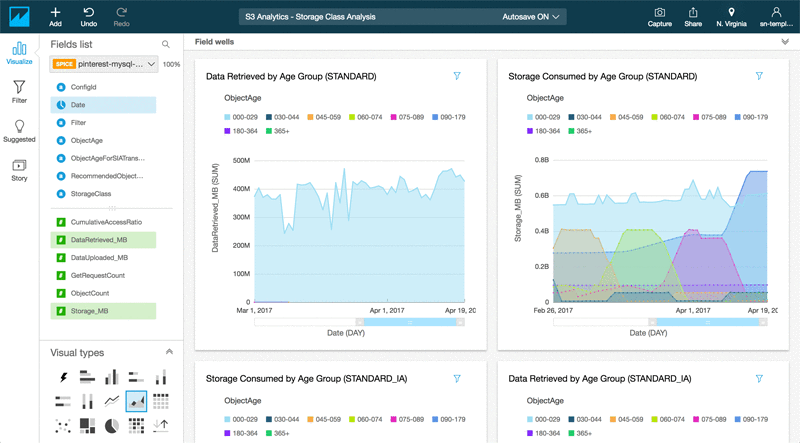AWS Big Data Blog
Visualize Amazon S3 Analytics Data with Amazon QuickSight
When Amazon S3 analytics was released in November 2016, it gave you the ability to analyze storage access patterns and transition the right data to the right storage class. You could also manually export the data to an S3 bucket to analyze, using the business intelligence tool of your choice, and gather deeper insights on usage and growth patterns. This helped you reduce storage costs while optimizing performance based on usage patterns.
With today’s update, you can quickly and easily gain those deeper insights and benefits by analyzing and visualizing S3 analytics data in Amazon QuickSight. It takes just a single click from the S3 console, without the need for manual exports or additional data preparation.
If you already have S3 analytics storage class analysis enabled for your buckets, choose Explore in QuickSight on the top right.

Users new to Amazon QuickSight can follow the steps to get set up. Existing QuickSight users are automatically deep linked to an analysis of their S3 analytics data.
From there, you can access the pre-built visualizations to understand the storage access pattern of your bucket. For example, you can visualize the amount of data retrieved vs. the amount of storage consumed for objects of different age groups to identify infrequently accessed data. You can also create new visualizations and perform ad hoc analysis to break down the access patterns by the filters that you have defined in S3 analytics.

Finally, you can set up a daily scheduled refresh of the storage class analysis data set in Amazon QuickSight to keep it up to date. Publish and share the analysis as a dashboard to other users in your organization to monitor your S3 storage access pattern.
This feature is now available in all QuickSight regions: US East (N. Virginia and Ohio), US West (Oregon), and EU (Ireland).
Learn more
To learn more about these capabilities and start using them in your dashboards, check out the Amazon QuickSight User Guide.
Stay engaged
If you have questions and suggestions, post them on the Amazon QuickSight Discussion Forum.
Not a QuickSight user?
Go to the Amazon QuickSight website to get started for FREE.